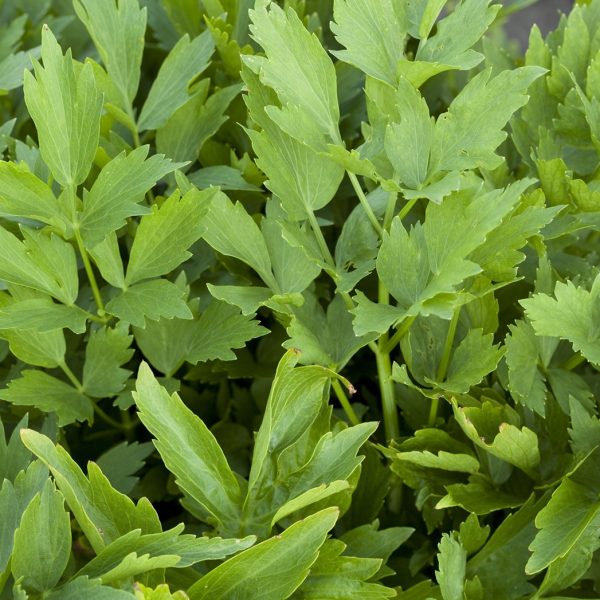-
How does it feel?
Cumin is an annual herbaceous plant of the Apiaceae family characterized by presenting its flowers arranged in umbels; the plant grows up to 30–50 cm tall and is harvested by hand.
Its stem is slender and branched, and somewhat angular.
The leaves are 5 – 10cm long, pinnate or bipinnate and are of a deep green colour, generally turned back at the ends. The upper leaves are nearly stalk less, but the lower ones have longer leaf-stalks.
The flowers are small, rose-coloured or white, in stalked umbels with only four to six rays, each of which are only about 4 – 6cm long, and bloom in June and July, being succeeded by fruit, which is a lateral fusiform or ovoid achene 4 – 5mm long, containing a single seed.
The seeds are oblong in shape, thicker in the middle, compressed laterally and yellow-brown in colour. The odour and taste are somewhat like caraway, but less agreeable.
-
What can I use it for?

Cumin plant (Cuminum cyminum) In traditional herbal medicine, cumin is used as a diuretic and to treat stomach upset and flatulence; it is thought to promote a healthy digestive system.
Cumin is carminative remedy, it can reduce bloating and it can be used to treat aerophagia or flatulence and cramping caused by gases. It is also useful in diarrhoea, colic & dyspepsia.
The spice appears to stimulate the liver to secrete more bile, which aids in the breakdown of fats and the absorption of nutrients, leading to healthier digestions; Cumin helps the body to absorb nutrients efficiently and it can also make the metabolism work more quickly cutting down on cravings.
It is considered also very cooling, prescribed for whooping or spasmodic cough, and can be added to gargles to treat laryngitis. It has been also used to treat chest and lung disorders such as pneumonia.
Cumin is a very good source of iron, which is needed to transport oxygen to all the cells within the body, and it can be useful in case of anaemia.
Cumin can be useful for the reproductive system, in fact can stimulates menstruation and also can be used as a lactagogue. Poultices of cumin are used to treat swellings of the breasts or testicles, and enters into most of the prescriptions for gonorrhoea.
-
Into the heart of cumin

Cumin in a jar (Cuminum cyminum) Cumin helps in digesting food properly. It is one of the best herbs for digestive sluggishness; it also helps in the cure of digestion related problems. These actions are due to the aromatic compound cuminaldehyde, which helps to induce secretion of digestive juices just by the aroma and the stimulation of our salivary glands.
Thymol is another compound present in cumin that stimulates the glands as well helping to promote the production of saliva, bile and other enzymes responsible for food digestion.
Cumin contain fatty oils (mainly petroselic acid and oil acid) which have anti-fungal, anti-microbial and disinfecting properties. Numbers of investigations have shown the antimicrobial activity of cumin against a range of useful and pathogenic gram-positive and gram-negative bacterial strain.
Cuminaldehyde, carvone, limonene, linalool, and some other minor constituents have been suggested to contribute to the antimicrobial activity of cumin, preventing fungal and microbial infections from harming the skin.
Cumin is anti-congestive agent and is a good expectorant, due to its rich essential oils, therefore it is useful in case of cough, cold and bronchitis: the essential oils present in cumin also play an important role in strengthening the immunity.
Cumin contains riboflavin, vitamin B6 and niacin – useful in improving cognitive functions of brain.
Cumin seeds are reported to be estrogenic; the presence of phytoestrogens in cumin has been shown and also related to its anti-osteoporotic effects. In the animals receiving a methanolic extract of cumin, a significant reduction in urinary calcium excretion and augmentation of calcium content and mechanical strength of bones was found.
-
Traditional actions
Herbal actions describe therapeutic changes that occur in the body in response to taking a herb. These actions are used to express how a herb physiologically influences cells, tissues, organs or systems. Clinical observations are traditionally what have defined these actions: an increase in urine output, diuretic; improved wound healing, vulnerary; or a reduction in fever, antipyretic. These descriptors too have become a means to group herbs by their effects on the body — herbs with a nervine action have become the nervines, herbs with a bitter action are the bitters. Recognising herbs as members of these groups provides a preliminary familiarity with their mechanisms from which to then develop an understanding of their affinities and nuance and discern their clinical significance.
-
Traditional energetic actions
Herbal energetics are the descriptions Herbalists have given to plants, mushrooms, lichens, foods, and some minerals based on the direct experience of how they taste, feel, and work in the body. All traditional health systems use these principles to explain how the environment we live in and absorb, impacts our health. Find out more about traditional energetic actions in our article “An introduction to herbal energetics“.
-
Did you know?
- Cumin is a very small annual plant thriving in the hot and dry areas of Rajasthan and Gujerat.
- Although it is a pungent herb it does not aggravate pitta unless used excessively.
- Use roasted after a meal as a great folk remedy ‘cure-all’ for digestive problems.
- It has been found in excavation sites in Syria from around 2000 BC and in Egyptian sites from the 16th to 11th Centuries BC. Persians are thought to be the first people to have cultivated cumin and Egyptians also used it for mummification.
Additional information
-
Safety
No drug herb interactions are known.
-
Dosage
Tincture: 3–15ml of a 1:3 at 45%
Dried: 0.5–5g/day


































